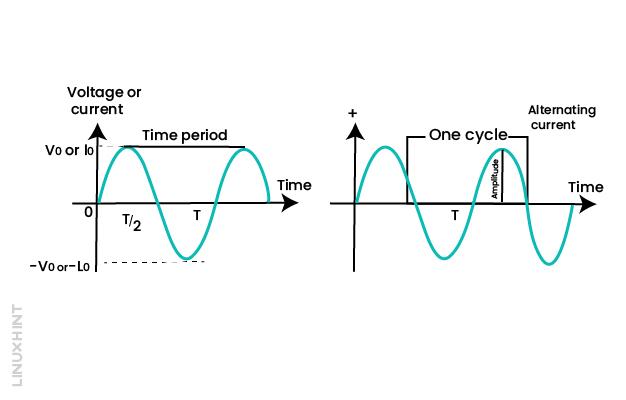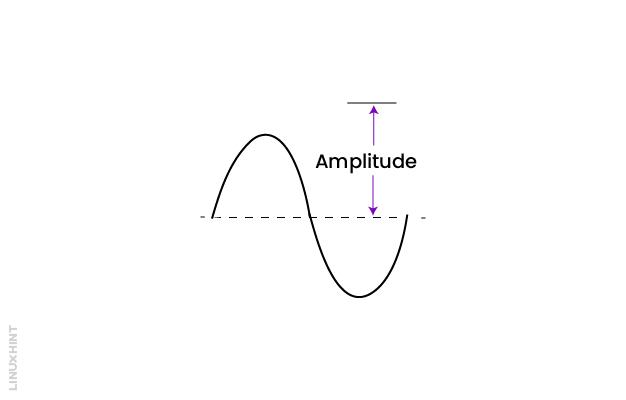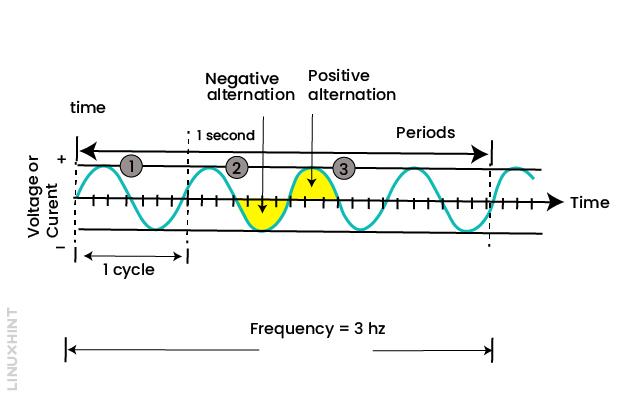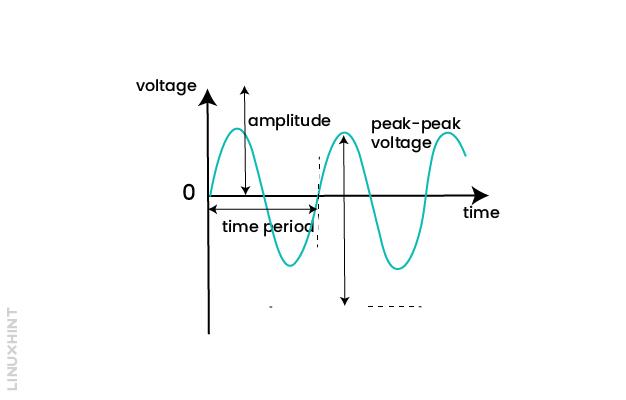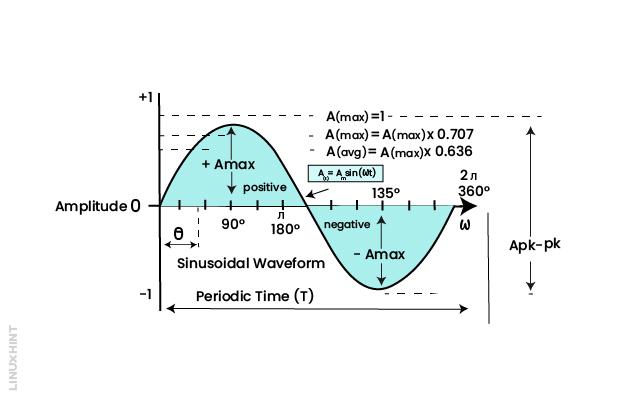Sinusoidal Waveforms AC Circuits
The sinusoidal waveforms are changing with time, but the overall pattern is the same. It is a well-known concept in electrical engineering that when a coil rotates to and for in a magnet, an alternating current will be produced.
The above figure shows the AC waveform keeps on changing, but the pattern is the same throughout the signal.
There are some basic characteristics of AC waveform:
Amplitude
The maximum value achieved by the signal from the zero line is known as amplitude. The Vmax and Vmin both are the same in a proper sinusoidal signal. For the different signals, their values are different. The formula for the peak-to-peak value is given as:
Below given figure shoes the clear depiction of amplitude:
The below figure shows the peak value and Peak-to-peak value:
Frequency
The number of complete cycles of waveform passing through any medium for one second is called frequency. The formula to represent the frequency is given as:
The unit of frequency is hertz (H), below figure gives the frequency of ac signal that is 3hz, that is three cycle passes for one second:
Time Period
The reverse of frequency is the time period or in other words, the time in which a waveform repeat itself is the time period. The formula to represent the period is given as:
The above figure shows the period of an AC waveform. There are some other characteristics of AC waveform, such as:
Average Value of AC Waveform
The AC waveform is obtained by taking the average of all the instantaneous values of voltage or current. The formula to the average is given as:
RMS Value
The RMS character is related to the AC waveform only. A formula to calculate RMS is given as:
Form Factor
For form factor, divide the RMS value by the average value, and the formula of this form factor is given as:
Example of AC Wave Form
Find the values of amplitude, frequency and period in figure given below:
The amplitude of the signal in the figure is given as
The time period of signal in the figure is given as
The frequency of signal in the figure is given as
Conclusion
The sinusoidal waveform continuously changes with time but repeats itself throughout the signal. There are some characteristics related to the sinusoidal waveform, such as period, frequency, and amplitude.

